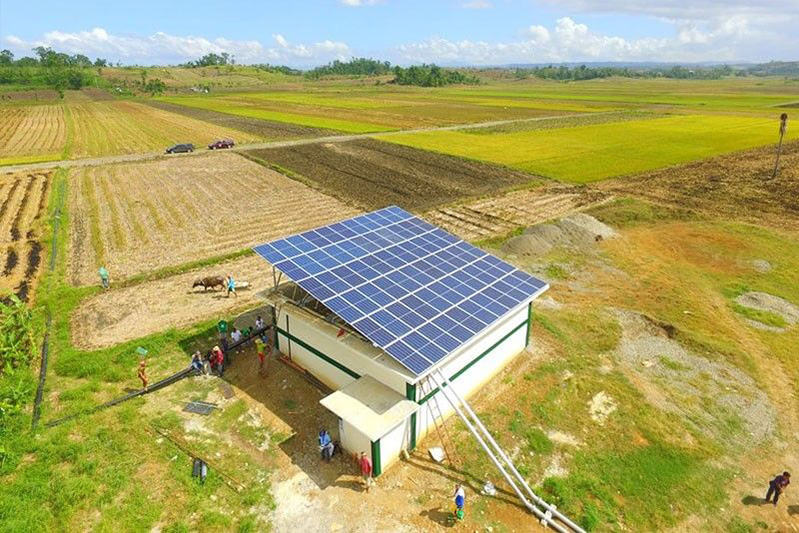PHL eyes 100 irrigation pumps powered by solar

PRESIDENT Ferdinand R. Marcos, Jr. on Monday ordered the National Irrigation Administration (NIA) to look at its assets with power generation potential, as his government seeks to set up more than 100 solar-powered irrigation pumps this year.
He also urged the private sector to pursue “extraordinary” projects to advance the country’s transition to clean energy.
The government set up 82 solar-powered pump projects last year, and 152 more will be built this year, Mr. Marcos said at the inauguration of a P65.7-million solar-powered pump in a farming village in Quirino, Isabela north of Manila, the capital.
“I encourage you to study our other irrigation assets so that we can establish power generations like this,” he told NIA officials, based on a transcript from the presidential palace.
The Cabaruan solar-reliant irrigation system, touted as the biggest of its kind in the Philippines with 1,056 solar panels that can produce 739,200 watts, is expected to irrigate 350 hectares of rice fields and benefit 200 rice farmers.
The palace said the project, which is under NIA’s Magat River Integrated Irrigation System, is the first solar-powered irrigation pump in the country to be built over an irrigation canal, so farmers need not donate a portion of the land they till.
“Our savings here are really huge because aside from having a free electricity source, we placed our solar panels directly on top of the irrigation canal, so it won’t reduce the land area planted by our farmers,” the President said at the launch.
Mr. Marcos, 66, has vowed to boost the country’s shift to renewable energy after his election in 2022, asking foreign investors in international fora to consider green investments in the Philippines.
Coal accounted for 58% of the Philippines’ power generation mix in 2021, according to the Energy department.
Green groups have warned against the Marcos government’s decision to lower tariffs on coal briquettes, saying it could delay the country’s transition to clean energy.
The government should instead come up with more incentives for renewable energy projects, they said.
Increased electricity costs drove May inflation, which hit 3.9% from 3.8% in April.
The President also led the ceremonial signing of a connection agreement for a 440-megawatt (MW) solar farm in Ilagan City and Gamu town in Isabela that will be undertaken by San Ignacio Energy Resources Development Corp. and the National Grid Corp. of the Philippines, with financial and technical expertise from French company Total Energies.
San Ignacio is a unit of Nextnorth Energy Group, which is pursuing solar and hydropower projects in northern Luzon.
Construction of the P18-billion Isabela Ground Mounted Solar Project, which could benefit 4,000 workers, is expected to begin in the fourth quarter and will be finished by 2026.
A 2024 Green Economy Report for Southeast Asia by Bain & Co. said green investments in the Philippines rose by 57% to $1.46 billion last year. This still fell short of the more than $16-billion capital investments needed for its green transition.
“Let us continue to pursue extraordinary opportunities like this, to give ourselves and the next generations a fighting chance to succeed in reversing our exacerbating climate change problems,” Mr. Marcos said. — Kyle Aristophere T. Atienza



